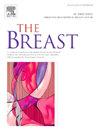不可触及的乳腺病变定位技术的创新:使不可见可见
IF 5.7
2区 医学
Q1 OBSTETRICS & GYNECOLOGY
引用次数: 0
摘要
不可触及的乳腺癌病变是外科医生切除癌症病变的一个挑战。把“看不见的”损伤变成“看得见的”是主要策略。目前,多种术前定位技术已应用于临床。其中,线导定位(WGL)因其方便、成本低而成为最常用的定位方法。然而,它的局限性包括不适、钢丝移位以及定位与手术程序的耦合,给外科医生和患者带来了麻烦。随着新兴科学技术的进步,人们对定位方法改进的渴望,导致了一系列乳腺不可触及病灶的定位方法的发展,旨在提高定位精度的同时减少不良事件。这些新兴的方法经历了从钢丝到功能粒子,从放射性到非放射性的改进,帮助医生和患者选择更合适的方案。本文综述了这些定位方法的原理、步骤、优缺点,并重点介绍了创新定位方法的最新进展和相关临床资料。最后,我们简要讨论了这些定位方法在临床应用中的当前挑战和未来机遇。本文章由计算机程序翻译,如有差异,请以英文原文为准。
Innovations in the localization techniques for non-palpable breast lesions: Make invisible visible
Non-palpable breast cancer lesions pose a challenge for surgeons to resect cancer lesions. Making ‘invisible’ lesions ‘visible’ is the main strategy. Currently, multiple preoperative localization techniques have been applied in clinical. Among them, wire-guided localization (WGL) is the most common procedure due to its convenience and low cost. However, its limitations including discomfort, wire migration and the coupling of localization and operation procedures cause troubles for surgeons and patients. The desire for localization methods improvement, accompanied by the advance of emerging science and technology, leads to the development of a series of locating approaches for breast non-palpable lesions, aiming to improve locating accuracy while reducing adverse events. These emerging methods have undergone improvements from steel wire to functional particles, from radioactivity to non-radioactive, which help doctors and patients choose a more appropriate scheme. This review outlines the principles, procedures, advantages and disadvantages of these locating methods, and highlights the latest progress and related clinical data on innovative locating approaches. Finally, we briefly discuss the current challenges and future opportunities for the clinical application of these localization approaches.
求助全文
通过发布文献求助,成功后即可免费获取论文全文。
去求助
来源期刊

Breast
医学-妇产科学
CiteScore
8.70
自引率
2.60%
发文量
165
审稿时长
59 days
期刊介绍:
The Breast is an international, multidisciplinary journal for researchers and clinicians, which focuses on translational and clinical research for the advancement of breast cancer prevention, diagnosis and treatment of all stages.
 求助内容:
求助内容: 应助结果提醒方式:
应助结果提醒方式:


